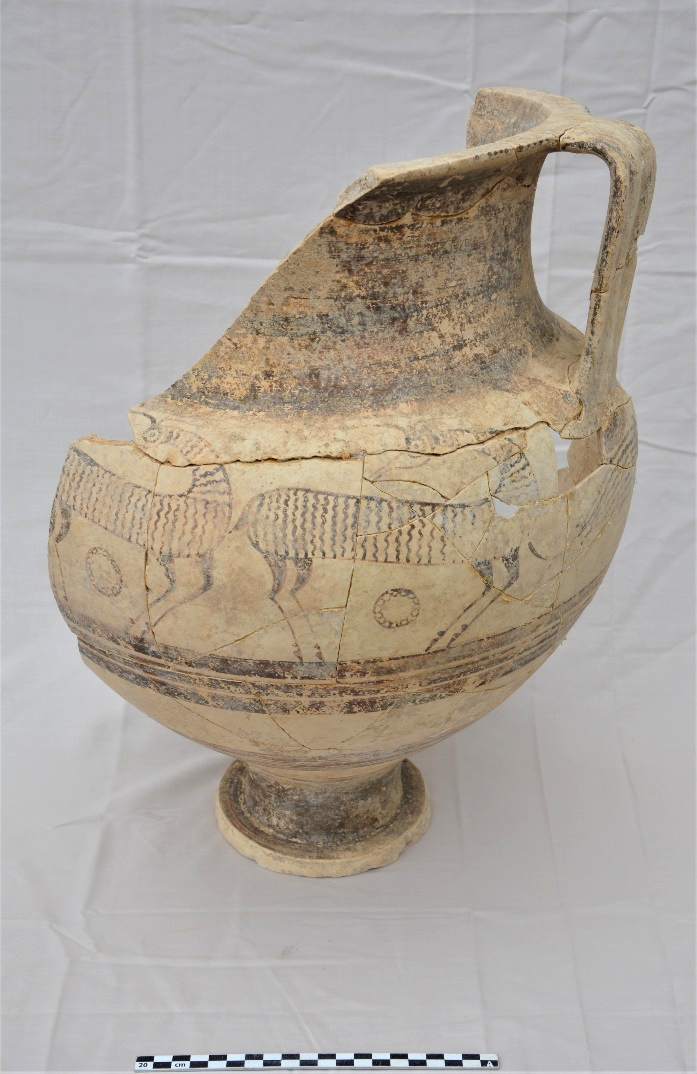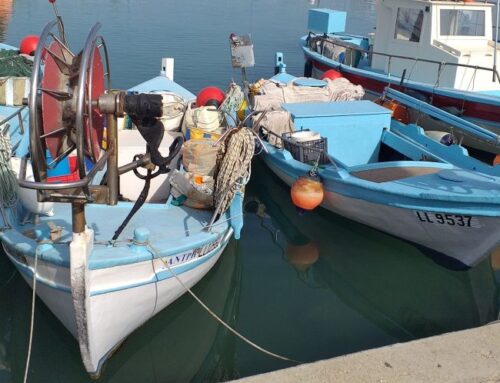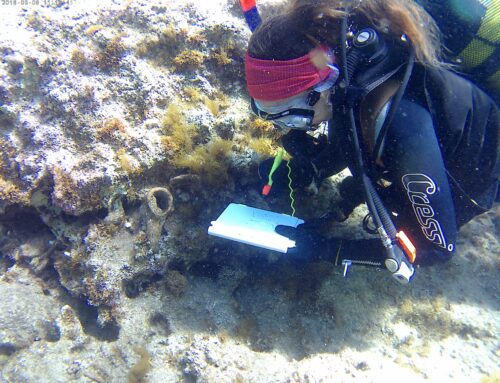C-PEPL. Excavations at Pyla Kokkinokremos on Cyprus
Professor Jan Driessen

Sector 3 (UCLouvain) room with orthostate walls and two Sardinian vases
The end of the 13th c. BCE or advanced Late Bronze Age in the Mediterranean is generally considered as a period of major turmoil with many important polities being destroyed (Mycenaean palaces, Troy, Hittite empire, Ugarit, etc.) and others, like Egypt, under attack by the (in)famous Sea People. Natural disasters (including climate change), economic breakdown, population migrations, and pirate raids are just a few of the explanations that have been offered. The period was also a time of major transformations with iron and the alphabet being introduced and new polities such as those of the Phoenicians and Israel being formed. It is within this context of societal upheaval that the coastal site of Pyla-Kokkinokremos is being explored. Located on the south-east coast of the island of Cyprus – opposite Ugarit and Egypt -, this 7-ha-large site is characterized by its very short-lived occupation (less than 50 years) and sudden abandonment around 1180 BCE, its planned and defensive lay-out (with bastions) and its sudden abandonment, leaving large quantities of multi-ethnic material in situ (local, Egyptian, Aegean, Levantine, Sardinian, etc.). Because of this, the site forms an ideal time capsule to study processes of migration, interconnection and influence between the different Mediterranean populations. As a direct witness to the so-called ‘crisis years’, continued exploration at Pyla should considerably help to unravel historical processes that accompanied the breakup of the Late Bronze Age world and to characterize the types of cultural interactions that took place among the people of the eastern Mediterranean during this period.
Final Project Update
The coastal hill-site of Pyla Kokkinokremos (Fig. 1), located in the east part of Larnaka Bay on the island of Cyprus, occupies a special position in the discussions on the Crisis Years about the collapse of the Late Bronze Age societies around 1200 BCE, and the potential role of the “Sea Peoples” mentioned in Egyptian and Near Eastern sources in this collapse. Established on a promontory, the heart-shaped plateau of Pyla-Kokkinokremos carried a settlement of at least 7 ha in extent. Founded in the second half of the 13th c. BCE, the site seems already to have been abandoned between 1200 and 1180 BCE, during the Late Cypriot (LC) IIC period, and was never resettled. This means it was occupied for about 50 years or two generations, if not less. The absence of clear distinctions between the dwellings and the repetition of quasi-identical complexes, each about 80-100 m² and comprising about 8-10 internal spaces (when separate architectural units can be identified), is quite remarkable. This regularity, the strategic location, the difficult access, and the probably continuous enclosure wall give the settlement a notable defensible flavour but may also reflect a great homogeneity between its inhabitants and perhaps a bottom-up process in the laying-out of the town. Apart from this rather formal organization, the site also surprises because of the varied origins of its material culture, as preserved in its abundant abandonment contexts: Canaanite jars, Egyptian alabaster vases and meat jars, Sardinian olle and table ware, Mycenaean kraters or Minoan jugs and Trojan Grey Ware are present besides the ubiquitous local Cypriot domestic and fine wares. Recent excavations (2014-2024) at Pyla-Kokkinokremos have clarified the process through which the dwellings were constructed and has corrected the idea that these were built in haste. Recent explorations also suggest the presence of independent structures against the south slope of the hill, facing the sea, where the presumed harbour was located (Fig. 2). These structures also date to the Late Bronze Age, as shown by a fine imported Mycenaean deer krater (Fig. 3). The topographical situation of the site – a steep hill within an originally hidden bay – would imply that ships that boarded here were well-protected but could also have manoeuvred in ways that were not visible from the sea itself.







